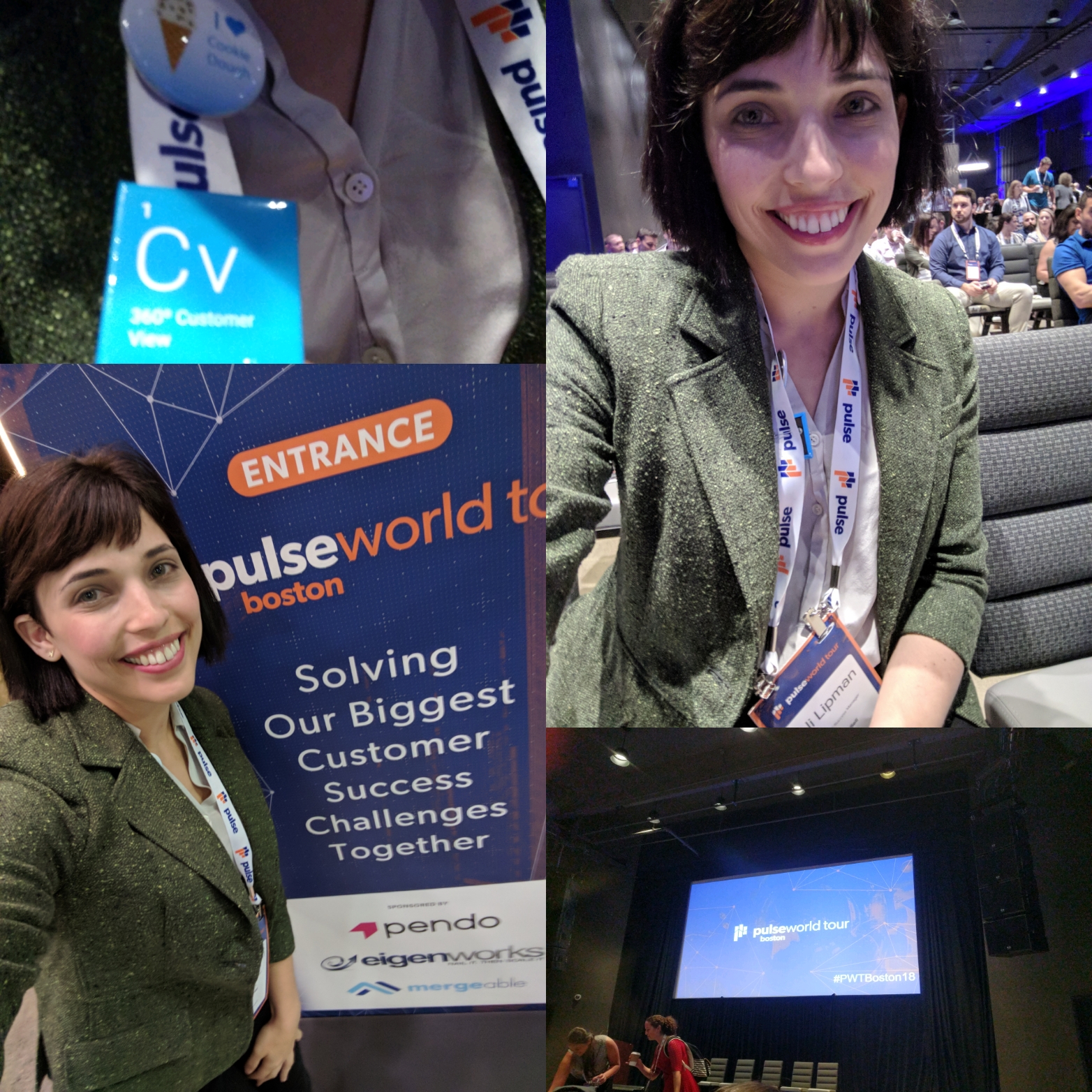Three Takeaways from Pulse World Tour: Boston
Last Wednesday, I attended the Boston Stop of the Pulse World Tour. This tour is a traveling preview of Pulse, Gainsight’s annual Customer Success conference (scheduled for this upcoming May in San Francisco). Both the tour and the main conference bring together the customer success community for continued education, networking, and strategizing. I enjoyed meeting my local peers and hearing Nick Mehta, CEO of Gainsight, compare the history of Boston to customer success. (Spoiler alert: Customer Success managers know all about long and complex projects — just like the Big Dig!)
Besides the good laughs, I learned a lot about the growing number of ways that you can help your customers be wildly successful. If your business operates under a recurring revenue model, then buckle-in. Here are three major takeaways from Pulse: Boston!

Welcome to the Age of the Customer
Gone are the days when simply having a good product was enough to draw in and retain customers. Excellent online presence and finely-tuned logistics alone cannot grow or sustain your business. It’s time to embrace customer-centricity. I know what you’re thinking: you already value your customers and provide excellent customer service. But that isn’t enough.
Enter: customer success. This is the marriage of exceptional customer experience and desired outcome.
Customer experience is a combination of product features, ease of adoption, and interactions with your staff throughout the buying and onboarding process.
Desired outcome is the answer to why your customers purchased a product in the first place. This should be defined during your sales process, implemented during the project phase, and periodically measured throughout the lifetime of their relationship with your business.
As you can see, customer experience and desired outcome touch many different parts of your business. For this reason, customer success managers can’t fix the problem of churn alone. Disparate departments operating in vacuums threaten customer retention and contribute to churn. Departments need to work together to fill the pipeline with leads that are a good-fit, sell solutions that addresses customer needs, implement them correctly, and onboard customers effectively.
Your customers don’t automatically reach their goals after you close a sale or complete a project. It’s the job of customer success managers to help them adopt your product and succeed at every stage of the process – even after they cross the finish line.
Data is King
There’s a lot of talk about creating a recurring revenue playbook for the steps you should take if your customer is at risk of not renewing.
It’s too easy to presume why your customers churn without looking at data first. You likely have housed data in your CRM, marketing automation, and ERP solutions. It should be analyzed to understand customer engagement and predict results.
At Pulse: Boston, I learned about how different companies build predictive models to understand how certain behaviors indicate risk. For example, Mitel analyzes subscription data, demographics, support tickets, self-reported sentiment, engagement with marketing materials, product usage, and disruptions to fill data gaps and keep customers on track for success.
At the end of the day, it’s mutually beneficial to make sure your customer succeeds with your product or service – so don’t just feel around in the dark. Use the data at your fingertips to save yourself time and energy and make sure your processes are backed up by facts.
Strategize for Success
One of my favorite parts of Pulse: Boston was learning about other companies’ strategies for helping customers achieve the best value from their product. In addition to using intelligent software solutions to guide users through product features and compile user data, subscription-based businesses are coming up with innovative ways to effectively grow their customer relationships.
Take PTC for example. They crafted a revenue-stream around their Success Plan packages that allow their customers to use pre-purchased points towards dedicated consulting sessions, access to technical account managers, technical training, and more.
The results speak for themselves. PTC saw an increase in Net Promoter Score, subscription renewal rates, and revenue earned. Their success all boils down to the fact that customers don’t want to sink costs into failed products. They are willing to proactively invest in tools and services that will help them succeed.
The Bottom Line
First, if you manage subscription accounts of any kind, Pulse World Tour is a must-attend event. Nothing is as energizing as learning about strategy in a room full of passionate professionals. The Customer Success Revolution has arrived. In fact, customer success is #3 on LinkedIn’s 20 Most Promising Jobs of 2018. Attrition rates better watch their backs!
Second, the event affirmed my belief that setting up customers for success benefits both companies and their respective clients. As the needs (and attention span) of customers change, we must embrace progress and infuse our processes to help our customers achieve their goals.
If an estimated 80% of future revenue comes from your current customer base, then closing sales in large quantities doesn’t matter if you can’t retain customers. Your customers’ success needs to be the number-one priority.
So what are you waiting for? Let’s chat about your business’s customer success strategies today.

Stay in the Loop
Subscribe to get all our latest content sent directly to your inbox!






